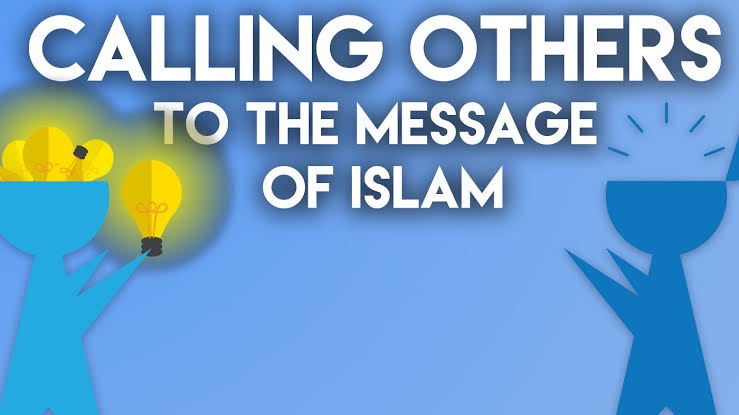Your Angry Child is not Aggressive (1)
Mother: Wait…wait! Why are you quarrelling? Son: He hit me first. His brother: No, it is he…
Mother: Wait…wait! Why are you quarrelling?
Son: He hit me first.
His brother: No, it is he who hit me first.
Son: He took my toy.
His brother: No, it is he who does not want to give me my toy.
Mother (yelling): Stop…stop. I am sick of this headache. Give me the toy. None of you will take it till you learn that you should not hit one another.
Dear parent, the mother in this situation might say that her children are aggressive, but we tell her, “O kind mother, wait. Who told you that this is aggression? It seems that you do not know the real meaning of aggression.” She would respond, “Look how the children are fighting.” The convincing response to that would be, “The first son hit the second because the second had taken the toy from the first, and the second hit the first because the first had not given the toy to the second. So, both became angry and had the right to do so. Both of them are right and have to be angry in similar situations.”
What a strange child is the one who does not get angry!
Dear parent, this is a fact that must be present in our minds while we are raising our children. It is a fact that we nurture people with a single thing in mind, which is the aspect of human perfection that only Prophet Muhammad ![]() achieved. We have to be realistic and logical while we are nurturing our children. We are not pursuing idealism; we pursue distinction in the field of reality because we are human beings and raising human beings. We are not angels nor are we raising angels. Therefore, we do not seek a child who is totally free of aggression. It is necessary to admit that there is an amount of aggression within us before it exists in our children – and this is the anger that the Islamic Shari‘ah corrects, limits and directs to what pleases Allah The Almighty and His Messenger
achieved. We have to be realistic and logical while we are nurturing our children. We are not pursuing idealism; we pursue distinction in the field of reality because we are human beings and raising human beings. We are not angels nor are we raising angels. Therefore, we do not seek a child who is totally free of aggression. It is necessary to admit that there is an amount of aggression within us before it exists in our children – and this is the anger that the Islamic Shari‘ah corrects, limits and directs to what pleases Allah The Almighty and His Messenger ![]() . Thus, the Quran teaches us to say what is best. Allah The Almighty Says (what means): {And tell My servants to say that which is best. Indeed, Satan induces [dissension] among them. Indeed Satan is ever, to mankind, a clear enemy.} [Quran 17:53]
. Thus, the Quran teaches us to say what is best. Allah The Almighty Says (what means): {And tell My servants to say that which is best. Indeed, Satan induces [dissension] among them. Indeed Satan is ever, to mankind, a clear enemy.} [Quran 17:53]
The purified Sunnah also teaches us to avoid anger and to control ourselves in times of anger. It was narrated on the authority of Abu Hurayrah ![]() that a man once asked the Prophet
that a man once asked the Prophet ![]() for advice. The Prophet
for advice. The Prophet ![]() said: “Do not be angry.” He, sallallaahu ‘Alayhi wa sallam, repeated this many times. [Al-Bukhari]
said: “Do not be angry.” He, sallallaahu ‘Alayhi wa sallam, repeated this many times. [Al-Bukhari]
The Noble Quran and the purified Sunnah have clarified that there is an amount of anger created in the souls; yet, the role of purification of the soul comes to execute this anger in obedience to Allah The Almighty as curbing anger is an act of obedience to Allah The Almighty too. We do not mean by “natural anger” that it is permissible and does not require guidance from parents to children. We mean that this anger, which needs to be adjusted, guided, altered, and cooled by this guidance and nurturing, is not sufficient grounds for us to describe our children as aggressive. How strange is the child who does not get angry! How strange is the man who does not get angry!
The child that never gets angry can never be considered normal
Anger is not simply an emotional conduct that we must learn how to guide and direct. It is also an educational key to recognize normal children from abnormal ones, and children who have attained maturity and those who have not yet. When anger is expressed appropriately, this would be a normal reaction. The child who never gets angry cannot be considered normal. Violent agitation for any reason is an issue that the child has to be guided to avoid, noting that anger which is suppressed day after day for fear of punishment will inevitably be accumulated and maximize till it explodes in a destructive and aggressive way. The child who cannot express his anger, however, does not have limitations, and people will treat him disrespectfully. Furthermore, he is less likely to say no to the pressure of his peers as he grows older. Suppressing anger brings about other negative consequences. A psychological consultant once asked a group of children what happens when anger is released:
Consultant: Do you discharge your anger in space?
Children: No
Consultant: So, where is this charge released?
Children: It is released inside you.
Consultant: What happens when you do not express your anger?
Children: One would perhaps commit a foolish action or feel dreadful at least.
It is rare to find a child who does not get angry, and when there is one, we have to make sure that he is normal. Perhaps this marks a slowdown in his development or maturity. The child expresses his anger during the first years in unguided actions because his instinct of violence is not sufficiently developed. Therefore, the child expresses his anger by shouting, throwing himself on the ground, jumping or kicking. After the age of four, these ways of expression diminish and he starts using words or threats to express his anger. The level of anger is not the same in all children, and their degree of satisfaction also varies from one child to another in length and speed.
Thus, the instinct to fight resulting from anger is not aggression.
It is established through experimental observation that agitation of anger is one of the innate neurological and psychological preparations born with humans and animals. Man, young or old, becomes angry in certain situations. So do animals when put in a situation that would provoke their anger. The existence of barriers between man and the fulfillment of his desire for gratification or satisfaction provokes his anger, and when anger is provoked, fighting becomes the automatic method of expressing it. Fighting includes directing all the forces of the individual to remove the obstacles facing him and eliminate them.
To this extent, we cannot describe fighting as aggression, because it is an automatic behavior stemming from an innate tendency to achieve a human need, and is directed to overcome the obstacle put forward by the surrounding environment. So, although we are born with an innate tendency to fight, there is a big difference between the tendency to fight and the tendency to be aggressive.
We can learn through proper social upbringing to become angry and fight to defend one’s right if someone tries to deny or usurp it. Similarly, we can become angry and fight for the sake of implementing good morals, such as supporting the oppressed. We should differentiate between the behavior in which a youngster quarrels or fights to defend himself and the behavior in which he is aggressive. Naturally, the child encounters some situations in which he is obliged to defend himself, to ward off aggression by others, or to get rid of an enemy or an evil threatening him. All these are normal situations in man’s life and cannot be described as aggression. It is noteworthy that these situations evoke the emotion of anger in man. In other words, man becomes angry when he is insulted, his properties are usurped, or he sees an evil action committed in front of him. Anger and the tendency to fight are normal behavior in children during the early stages of childhood; however, when these symptoms remain with the child at an advanced age and take on a violent form, they would be due to lack of proper adjustment. In a study conducted on 239 children between the ages of two and seven, it was found that:
• 28.9% of these children suffer from being easily provoked and feeling bored quickly.
• 15.7% were suffering from harshness and aggression.
• 11.3% were suffering from frequent stubborn and infantile behavior. The more these symptoms tend to remain constant after the age of five, the more they become an indication of the possible existence of behavioral problems in the youngster.




